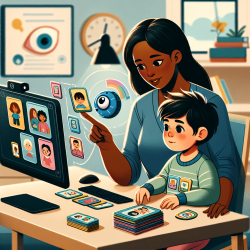Unlocking the Secrets: How Language Mapping in Temporal Lobe Epilepsy Can Transform Pediatric Therapy
Language mapping is a critical tool in managing temporal lobe epilepsy (TLE) in children. The research article "Language Mapping in Temporal Lobe Epilepsy in Children: Special Considerations" provides a comprehensive overview of the unique challenges and solutions in this area. For practitioners, understanding and implementing these findings can significantly enhance therapeutic outcomes for pediatric patients.
Understanding Temporal Lobe Epilepsy in Children
Temporal lobe epilepsy in children differs from that in adults in several ways, including semiology, pathology, and surgical treatment approaches. For instance, infants exhibit a predominance of behavioral arrests and more prominent convulsive activity than adults. Moreover, the etiology of seizures in children often involves dual pathology, necessitating a more extensive surgical approach.
The Importance of Language Mapping
Language mapping is essential before any surgical intervention to minimize postoperative neurological deficits. The research highlights that language can be variably modified by epilepsy, making precise mapping crucial. Notably, 77% of children with epilepsy exhibit atypical language patterns, which underscores the need for individualized mapping strategies.
Techniques for Language Mapping
Several techniques are used for language mapping, each with its advantages and limitations:
- Neuropsychological Evaluation: This involves a battery of standardized, age-appropriate tests for language and memory. It helps determine lateralization and guides further assessments.
- Sodium Amobarbital (Wada) Test: This invasive test involves injecting sodium amobarbital to freeze half of the brain, helping to lateralize language function. However, it requires full cooperation from the child, making it challenging for younger patients.
- Functional MRI (fMRI): fMRI is increasingly replacing invasive techniques due to its non-invasive nature and good spatial resolution. It shows the entire network of areas involved in specific tasks, making it a valuable tool for language mapping.
- Magnetoencephalography (MEG): MEG captures neuronal activity with excellent temporal resolution. It has shown good correlation with other techniques and is being increasingly used for language mapping in epilepsy patients.
Implementing Research Findings in Practice
For practitioners, incorporating these advanced techniques into clinical practice can significantly improve outcomes for children with TLE. Here are some actionable steps:
- Adopt Age-Appropriate Assessments: Ensure that the language assessment tools are suitable for the child's developmental stage. This increases the accuracy of mapping and helps tailor interventions.
- Use Non-Invasive Techniques: Whenever possible, opt for non-invasive methods like fMRI and MEG. These techniques are less stressful for children and provide reliable data.
- Collaborate with Multidisciplinary Teams: Language mapping requires a specialized team, including neurologists, neuropsychologists, and speech therapists. Collaboration ensures comprehensive care and better outcomes.
- Stay Updated with Emerging Techniques: Keep abreast of new developments in language mapping technologies. Techniques like functional Near-Infrared Spectroscopy (fNIRS) and Diffusion Tensor Imaging (DTI) are promising and may offer additional insights.
Encouraging Further Research
The field of language mapping in pediatric TLE is continually evolving. Practitioners are encouraged to engage in ongoing research to refine techniques and improve therapeutic outcomes. Participating in studies and staying informed about the latest advancements can make a significant difference in patient care.
To read the original research paper, please follow this link: Language Mapping in Temporal Lobe Epilepsy in Children: Special Considerations.










